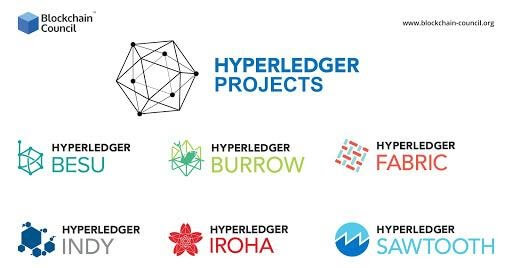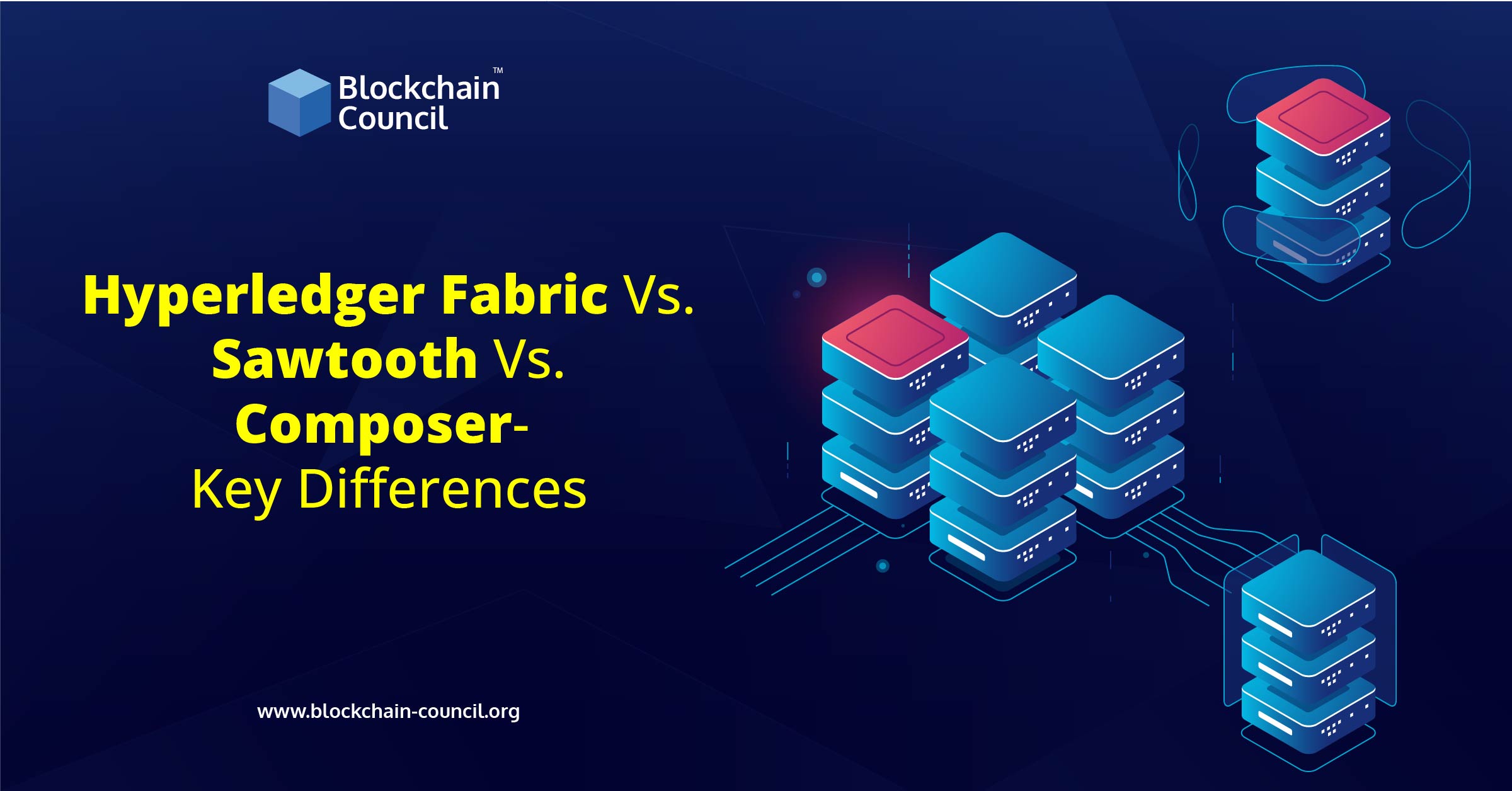
- Toshendra Kumar Sharma
- July 28, 2020
If you want to become a hyperledger expert, you should have an in-depth understanding of various hyperledger projects, their features & functionalities, and how they differ from one another. This article explains what is hyperledger technology and details all the major hyperledger projects.
Learning of Blog
- Overview of Hyperledger
- Top Hyperledger Projects
- Concluding Lines
Overview of Hyperledger
Hyperledger came into existence in 2015, is an open-source global collaboration that helps to develop enterprise-grade and distributed ledger frameworks to promote business transactions and encourage cross-industry blockchain technologies. It was introduced by the Linux Foundation, which is an open-source distributed ledger framework and codebase where enormous projects and production systems across the globe come under its category. This technology comes with several free tools and frameworks that allow enterprises and blockchain developers to build blockchain-based solutions for their enterprises. Hyperledger aims at educating individuals about the market opportunity that blockchain holds and, in addition, provides a community-driven, open infrastructure supported by technical and business governance.
Hyperledger Projects In Depth
Now, as we have understood what exactly is Hyperledger technology, let’s talk about its popular projects that are all open source. Major Six Hyperledger projects are as follows:
- Hyperledger Besu
- Hyperledger Burrow
- Hyperledger Fabric
- Hyperledger Indy
- Hyperledger Aroha
- Hyperledger Sawtooth
Hyperledger Besu
Hyperledger Besu was initially introduced to reduce entry barriers for enterprises and maintain and scale mainnet. Besu is an open-source Ethereum client developed under the license of Apache 2.0 written in Java programming language that can run on public and private-permissioned networks. In addition, it can also run on test networks such as Rinkeby, Gorli, and Ropsten. The Besu’s API supports Ethereum functionalities such as smart contract development, dApps development, and Ether mining. Besu’s official website defines it as one of the Ethereum clients’ software that implements the Ethereum protocol.
KEY FEATURES
- It implements various consensus mechanisms such as PoW for mining activities and Proof of Authority and allows developers to monitor node and network performance.
- When it comes to storage, it utilizes a RocksDB key-value database to locally persist chain data.
- It supports P2P networking and implements Ethereum’s devp2p for inter-client communication and an additional sub-protocol for IBFT2.0.
- Besu is known for its permissioning and privacy control, as it allows only specific nodes and accounts to participate in the network while maintaining complete privacy between the participating parties.
Hyperledger Besu’s new APIs were launched this year on 26th February, allowing everyone to write custom plugins for Besu. This new Plugin API enables users to input data from any Besu network and feed it into the rest of their application. The current version of besu is Version 1.4 that supports multi-tenancy, end to end TLS support, private state migration, and much more functionalities, including better NAT support and new tracing APIs.
Hyperledger Burrow
Burrow is a fully-fledged blockchain node and smart contract execution engine that focuses on simplicity and speed. Burrow runs and executes Ethereum Virtual Machine and Web Assembly (WASM) smart contracts and are synchronized using the Tendermint consensus algorithm. It is an open platform that is mainly optimized for public and permissioned blockchain; however, it can also be used as private blockchains. This blockchain-based project acts as a permissioned smart contract engine that helps develop and execute blockchain-based applications securely and efficiently for enterprises and businesses.
KEY FEATURES
- It allows stakeholders to vote for autonomous smart contract upgrades. It also supports low-level permissioning, which means code execution permissions can be set on a per-account basis.
- Hyperledger Burrow allows one to call a smart contract while in the transaction process.
- It has a tamper-resistant Merkle state, where the node can detect its corrupted state.
- It has an Application Blockchain Interface (ABCI), which is responsible for connecting a consensus engine with the smart contract application layer, which in turn, ensures that the consensus engine is agnostic in terms of smart contract applications.
Hyperledger Fabric
Fabric, a private and permissioned network, is one of the Hyperledger blockchain projects that have a ledger, uses smart contract functionalities, and offers a system that enables participants to manage their transactions like other blockchain projects. Fabric offers a modular architecture that aims at maximizing blockchain privacy, flexibility, and also facilitates decision-making processes. It offers a collaborative approach for developing blockchain technologies through the community process, with intellectual property rights that promote open development.
KEY FEATURES
- Hyperledger Fabric offers a private and permissioned network that enrolls through a Membership Service Provider, which is completely trustable. Moreover, this blockchain project supports networks where privacy (using channels) is a vital operational requirement.
- This blockchain project supports Smart contract functionality and possesses an open smart contract model that allows the flexibility to achieve the desired solution model and features a flexible endorsement model for achieving consensus.
- Moreover, it allows for creating channels, supporting a group of participants to create a separate ledger of transactions, and offers data sharing on a need-to-know basis by leveraging private data collections.
Hyperledger Indy
Explicitly designed for identity-based solutions, Indy is a distributed ledger that has several tools, libraries, and components for digital identities rooted in blockchains. Its identity-based solutions allow users to get the sole ownership of their very own identities. The best about this project is that it is interoperable with other blockchains and can be used standalone powering the decentralization of identity.
KEY FEATURES
- With Hyperledger Indy, one can store all their identity-based documentation on the network where all the crucial information is encrypted. Thus, allowing people to build a secure, scalable, and robust self-sovereign identity (SSI) solution.
- This blockchain-based hyperledger project maintains a secured layer of confidentiality for protecting all valuable information, ensuring that everything will remain only in the ledger, and no one can track down your identity from another ledger.
- Indy supports Zero-Knowledge Proofs(ZKPs), which confirms that all of the data in a set of Claims are valid without revealing any additional information, including the identity of the prover. It empowers people to disclose only a selective part of their document to prove their identity.
Hyperledger Aroha
Hyperledger project ‘Iroha’ was introduced for easy integration into the enterprise environment, which is easy to deploy and maintain with no extra complexity of the architecture that is hard to comprehend. It makes it super feasible to integrate into any existing enterprise networks. It is an open-source project and works on Linux and Mac OS, with several mobile and desktop libraries. One can use this platform for interbank settlement, central bank digital currencies, payment systems, healthcare, and logistics, among others.
KEY FEATURES
- In Iroha, deploying the platform is easy, and there are no complicated or confusing attributes.
- Iroha has a Crash fault-tolerant consensus algorithm that is high-performance, which allows for the finality of transactions with low latency.
- It provides developers with tons of libraries for the development process, and like other hyperledger projects, its structure is modular.
- In addition, Hyperledger Indy allows one to get asset management and identity management.
Hyperledger Sawtooth
Hyperledger Sawtooth is an open-source blockchain project under the Hyperledger family that offers an exceptional blockchain application development allowing developers to specify their business rules without understanding the underlying design of the core system. It has a flexible and modular architecture and supports both permissionless and permissioned architectures. It intends to maintain ledgers distributed and make smart contracts safe for enterprise usage. It supports EVM compatibility, along with parallel transactions.
KEY FEATURES
- This blockchain-based platform offers permissioning features and overcomes the challenges of the permissioned network. It ensures that only the authorized participants can get an entry to the network.
- The integration of Sawtooth with Ethereum, ‘Seth,’ allows the interoperability of the Sawtooth platform to Ethereum.
- To ensure efficiency, this blockchain-based project executes all the transactions parallelly.
- It supports a variety of consensus algorithms, such as RAFT, PBFT, PoET, that can be chosen during the network setup, and if required, can be changed on a running blockchain afterward.
Concluding Lines
Hyperledger technology is an open-source global collaborative created to advance cross-industry blockchain technologies. It aims to make blockchain development easier and more straightforward. One can use hyperledger projects across various domains, including finance, banking, healthcare, supply chains, manufacturing, and technology.
Due to its flexibility, scalability, and security that it offers, Hyperledger online training has gained a lot of popularity. Blockchain Council is an exceptional online platform that offers comprehensive training to beginners and advanced level learners. If you want to become a Certified Hyperledger Expert or a Certified Hyperledger Developer, get enrolled in the Blockchain Council and prove your hyperledger development skills.
To get instant updates about Blockchain Technology and to learn more about online blockchain certifications, check out Blockchain Council.


































































 Guides
Guides News
News Blockchain
Blockchain Cryptocurrency
& Digital Assets
Cryptocurrency
& Digital Assets Web3
Web3 Metaverse & NFTs
Metaverse & NFTs
